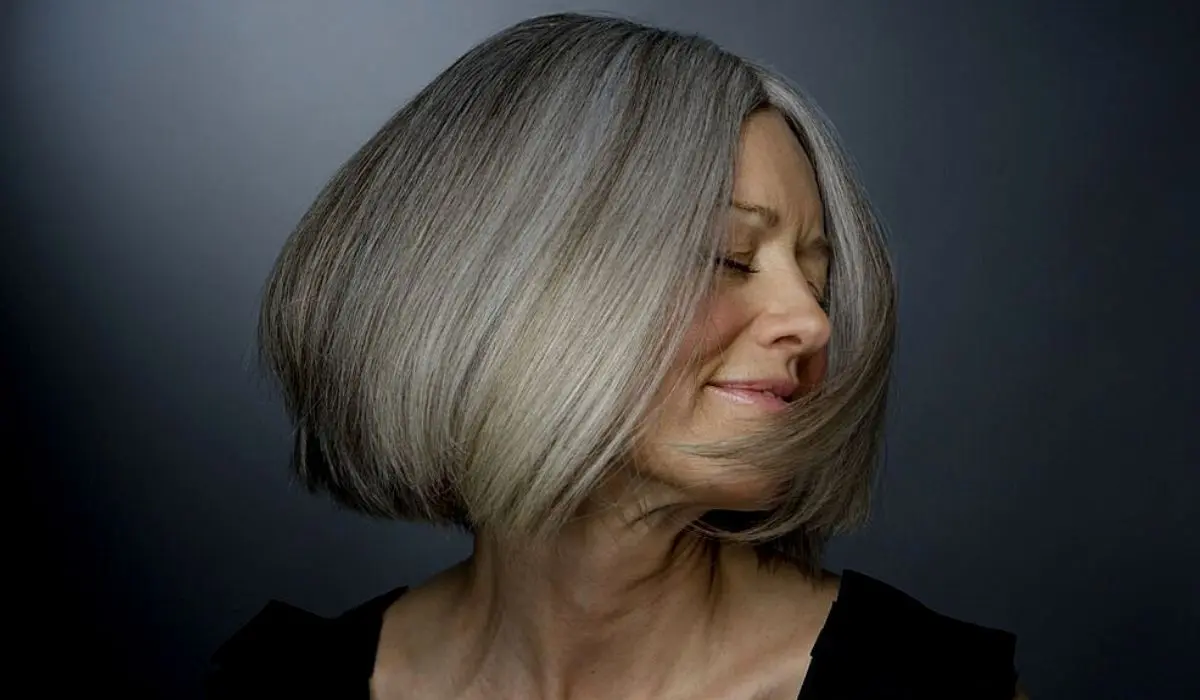Going grey is a natural part of aging that many people experience. For some, the transition can happen seemingly overnight, while for others it’s a gradual process spanning many years. Regardless of how quickly it happens, embracing the change to a more silvery locks can take some adjustment. The good news is there are many tips and tricks to help you gracefully transition to grey hair.
How Does Hair Transit To Grey? What Is The Reason Behind It?
Hair turns grey when melanocytes, the pigment producing cells in hair follicles, stop producing melanin. Melanin is the chemical that gives hair its natural color. As we age, melanocytes become less active and even die off completely. This causes new hair strands to grow in lighter and more grey until eventually all hair follice stop melanin production entirely.
The natural aging process accounts for most causes of greying hair. Some research indicates that accumulated oxidative stress and DNA damage within melanocytes contributes to their decline with age. Hair greying can also be hereditary. Premature greying before age 30 often has a strong genetic component.

While aging is the top reason for going grey, other factors like stress, smoking, and vitamin deficiencies may accelerate the process. However, more research is still needed to understand the complex interplay between genetics, environment, and the graying process. Regardless of the underlying cause, greying is inevitable for most as they grow older.
10 Tips For Transitioning To Grey Hair
1. Gradual grow out – If you color your hair, consider letting your roots grow out slowly over several weeks or months for a subtle and gradual transition. Trim the colored ends periodically to match the new growth.
2. Shorten length – Cropped cuts remove some of the demarcation line contrast between grey roots and colored hair. Go for a pixie, bob, or lob while transitioning.
3. Use demi-permanent color – Demi-permanent hair color blends away grey but washes out over several weeks. Reapply as needed for a gradual and seamless grow out.
4. Try highlights – Strategically placed foils around the part line and hairline camouflage roots growing in. Highlights also give dimension and contrast to grey strands.
5. Experiment with fun colors – Consider blue, purple, silver or other fashion colors as a transitional hue. These won’t leave obvious roots and can embrace your new grey.
6. Invest in quality haircare – Nourish hair with moisturizing and strengthening products. Grey hair tends to be drier and more wiry as melanin levels drop. Target problem areas like dryness and frizz.
7. Get a great cut – A skillful shape and layers can take years off and make the most of your changing texture and new growth patterns. Seek an experienced stylist.
8. Tweak your color palette – Silvery greys pair beautifully with icy blues, pearls, and neutrals. Update wardrobe and makeup colors to enhance your new hair hue.
9. Address yellow tones – Purple or blue toning products counteract yellow discoloration of grey. Try at-home glosses or toners to keep grey luminous.
10. Embrace the freedom! – Enjoy easier and fewer salon visits. Say goodbye to touch ups. Revel in your new look and time saved not covering every root.
Risk Factors For Premature Grey Hair
While greying is part of the standard aging process, there are factors that put some people at increased risk of premature greying before age 30:
☑️ Genetics – People with a family history often start going grey in their 20s or even teens. Greying genes can be inherited from either parent.
☑️ Oxidative stress – Smoking, pollution, poor diet, and other sources of oxidative damage appear to accelerate melanocyte decline.
☑️ Autoimmune disorders – Conditions like vitiligo, pernicious anemia, and thyroid disease have links to premature greying.
☑️ Nutrient deficiencies – Low vitamin B12, copper, iron and calcium may interfere with melanin production and hasten greying.
☑️ Stress – High stress levels may deplete the antioxidant glutathione and allow oxidative damage to melanocytes.
In most cases of early greying, genes are the dominant factor. Lifestyle measures like reducing stress, not smoking, and eating a balanced diet can potentially slow the process. Discuss onset of premature greying with your doctor to identify or rule out any underlying medical issues.
Conclusion
Transitioning to grey hair is an inevitable milestone many of us will pass through. While the change can come as a shock initially, there are many techniques to gracefully embrace your new silvery shades. With clever cut and color tricks, the right hair care regimen, and a positive attitude, your grey hair can become an elegant and sophisticated part of your style.
Let your new hair color inspire you to try different beauty looks and proceed with confidence into this next phase of life.
Read More:- 7 Best Headband Wigs For Fuss-Free Style – Explored!
FAQs
1. Is grey hair a sign of old age?
Grey hair is a natural part of the aging process for most people. However, premature greying before age 30 has a strong genetic component and does not necessarily indicate old age. Greying results from lowered melanin levels and melanocyte activity, not age itself.
2. Can stress really cause grey hair?
There is some scientific evidence that high stress levels deplete antioxidant reserves which may potentially accelerate greying. However, most studies indicate genetics are the dominant factor in when greying begins and progresses. Stress alone is unlikely to directly cause greying.
3. Is plucking grey hairs a bad idea?
Plucking grey hairs will not cause more greys to grow in its place. However, constantly plucking can damage the hair follicle over time. It’s better to gracefully embrace the transition and manage greys with smarter haircuts, styling techniques, and hair color.
4. Can grey hair turn back to its original color again?
Once hair has gone grey, the melanocytes that produce melanin pigment are gone. The only way to return to your original hair color is through artificial pigments like hair dye. Some conditions like vitamin deficiencies may be linked to temporary greying that can reverse once levels are corrected.
5. Is grey hair thinner than colored hair?
Grey hair itself does not necessarily thin out, but the texture often changes becoming drier and more wiry. Melanin provides some natural protection, so grey hair lacks that benefit. Proper nutrition, scalp care and moisturizing products can combat potential thinning of grey hair.

